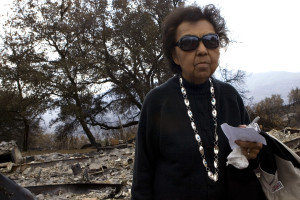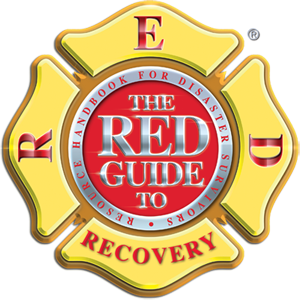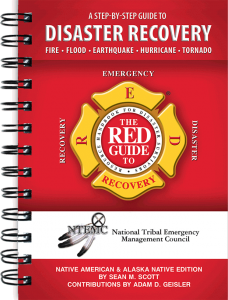Government Sites
FEMA’s Tribal Affairs Hub
In its efforts to build more resilient and better prepared communities, FEMA provides information about FEMA Contacts by Tribe, Tribal Disaster Declarations, Tribal Consultations, and Tribal Grants and Mitigation Planning Resources.
National Disaster Recovery Framework – FEMA
The National Disaster Recovery Framework is a guide that enables effective recovery support to disaster-impacted States, Tribes, Territorial and local jurisdictions.
Is Your Tribe Ready? Prepare for Emergencies in Tribal Nations (PDF)
This colorful 2-page PDF brochure offers questions to consider to encourage tribal households and communities to prepare for disasters. You will also find a summary of no-cost training offered by FEMA to tribal leaders, first responders and others. Printing Tip: Right click on the open file and select “Print”. Under “Size Options” click “Fit”.
Ready Indian Country -Prepare, Plan, Stay Informed
Ready Indian Country collaborates with tribal governments to build emergency management capability and partnerships to ensure continued survival of Tribal nations and communities.
FEMA Tribal Liaisons
View a list of FEMA HQ/Regional Tribal Liaisons on the FEMA.gov website.
Tribal Consultation
This FEMA Tribal Consultation Resource page is designed to provide the resources needed when FEMA seeks Tribal commentary about emergency management and FEMA.
Bureau of Indian Affairs (BIA) – U.S. Department of the Interior
The U.S. Department of Interior Indian Affairs office (BIA) provides services directly or through contracts, grants, or compacts to approximately 1.9 million American Indians and Alaska Natives. Contact your BIA Regional Emergency Manager, or Emergency Management Coordinator, to get contact information and notices of upcoming TAC-G conference calls.
Native American Liaisons (U.S. Fish & Wildlife Service)
Working together with Native American Liaisons and officials from among the Federally recognized tribes nationwide, the Office of the Native American Liaison identifies areas where both Federal and tribal conservation efforts can most effectively conserve fish, wildlife, plants, and their habitats.
Tribal Disaster Recovery Manager Responsibilities (PDF)
As part of the National Disaster Recovery Framework (NDRF), this 3-page brochure describes pre- and post- disaster recovery coordination responsibilities.
Tribal Organizations
Video: Emergency Preparedness for Tribal Leaders
This video provided by the NAEMT describes the roles and responsibilities of Tribal Leaders and Program Directors.
Inter Tribal Long Term Recovery Foundation
The Inter-Tribal Long Term Recovery Foundation was created to strengthen and enhance the coordination of area-wide disaster recovery efforts on tribal lands located in San Diego County. Watch their video of recent wildfire recovery experiences and commentaries from disaster survivors.
National Congress of American Indians (NCAI)
Now serving as the major national tribal government organization, NCAI is positioned to monitor federal policy and coordinated efforts to inform federal decisions that affect tribal government interests.
Northwest Tribal Emergency Management Council
NWTEMC is composed of and serves Tribes in Washington, Oregon and Idaho for the purposes of information sharing and solidarity in dealing with homeland security/emergency management/public health issues as they pertain to Native Nations.
United South and Eastern Tribes, Inc. (USET)
Established in 1969, USET is a non-profit, intertribal organization that collectively represents its member Tribes at the regional and national level. USET includes twenty-five federally recognized Tribes, operating through various workigroups and committees and providing a forum for the exchange of ideas and information amongst Tribes, agencies and governments.
iTEMA – Tribal Emergency Management Association
iTEMA supports education, training and preparedness activities and works to develop partnerships with Tribal, Federal, state, and local agencies and organizations for the advancement of emergency management and services.
Video: ‘Run to High Ground’ – A Native American Story About Tsunamis and Earthquakes
A storyteller shares the story of native peoples encounters with tsunamis and earthquakes with young children.
Other Non-Governmental Organizations
Tribal Risk and Emergency Management Association (TREMA)
The Tribal Risk and Emergency Management Advisory’s (TREMA) purpose is to gather resources, distribute information, and provide training. Education is key in emergency management and disaster preparedness. The goal is to assist Tribes in developing the tools necessary to ensure Native homelands, communities, and people are prepared, protected and able to recover.
AMERIND Risk Management Corporation
Tribes united to create AMERIND in 1986 to protect themselves, their treasuries, and their enrolled members from unforeseen or catastrophic financial loss. They help tribes to keep their money working in Indian Country, utilizing sound risk management principles, including risk sharing and education, to protect life and property from the devastation of fire, natural disasters and other unforeseen events.

